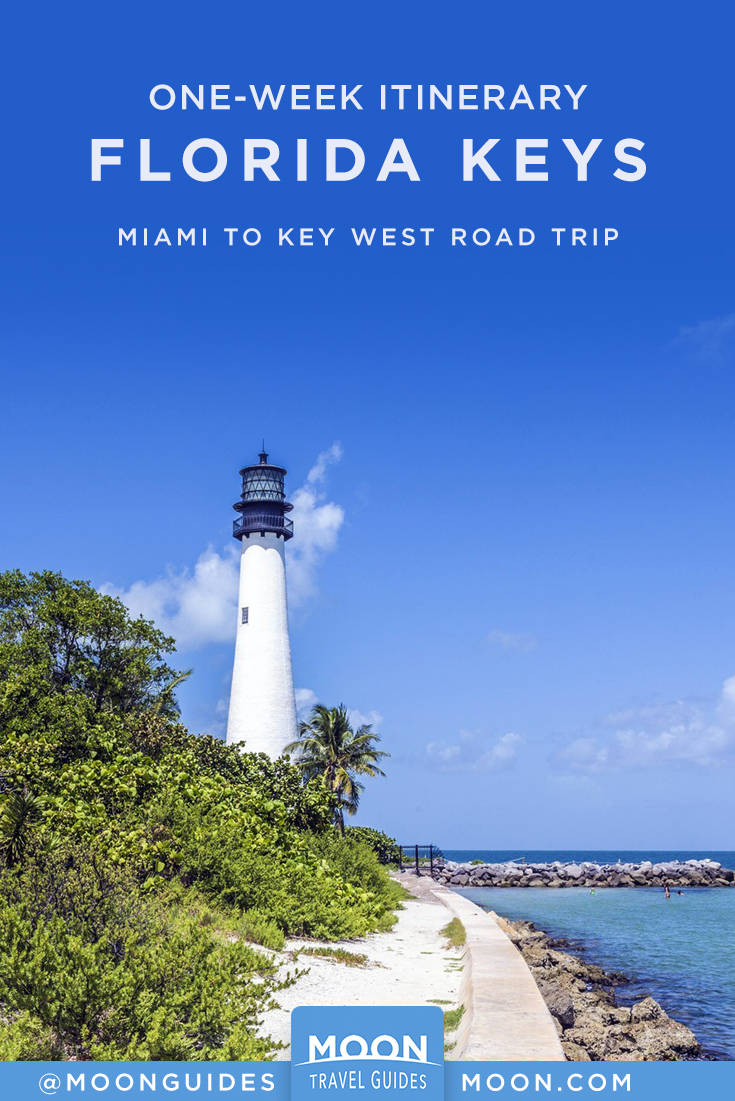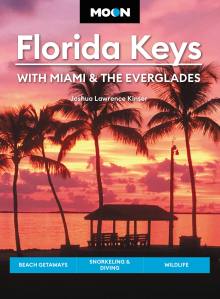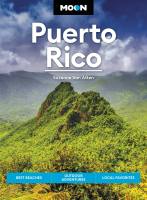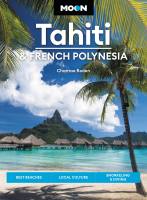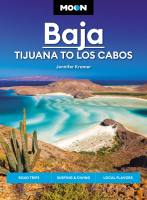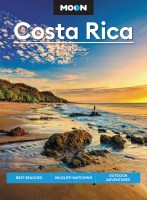One Week Florida Keys Road Trip Itinerary
First-time visitors to the Florida Keys should set aside at least a week to experience the best that these legendary islands—plus the gateway areas of Miami and the Everglades—have to offer.
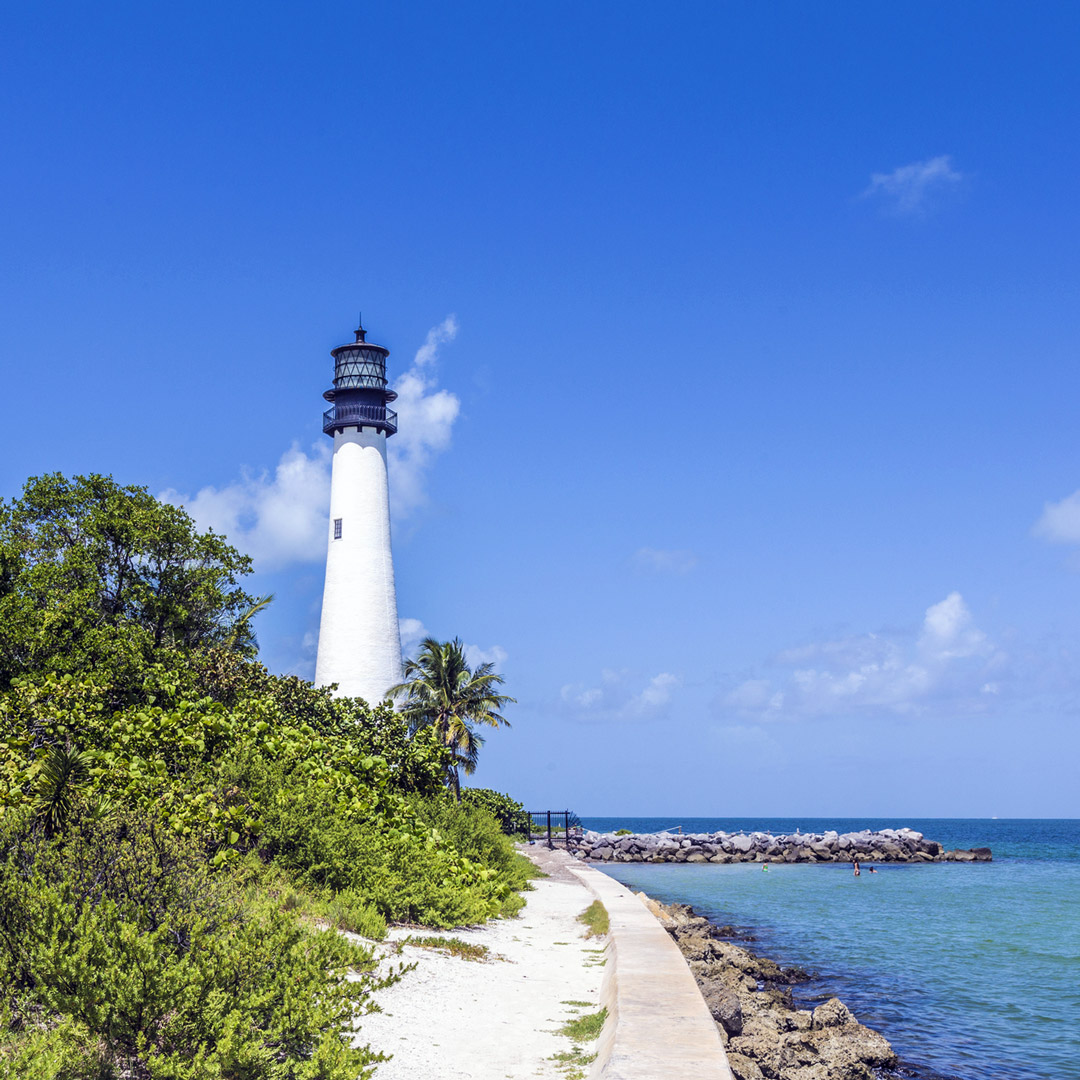
Day 1
Most travelers reach the Florida Keys by vehicle, which means you’ll likely begin your trip in the Miami area. For a taste of the city’s multicultural vibe, head to Little Havana, where you can sample authentic Cuban food and browse aromatic cigar shops. Then venture east to South Beach, where you can tour the colorful Art Deco District, view impressive art and artifact collections at the Jewish Museum of Florida—FIU or the World Erotic Art Museum, and relax at the popular Lummus Park Beach.
After lunch at one of South Beach’s savory cafés, head southwest to Coconut Grove and Coral Gables, both of which boast a variety of historic structures and shopping options. Savor a fine meal and perhaps stay the night at The Biltmore Hotel, a 1920s-era hotel in Coral Gables, where you can also play golf or enjoy a massage. If you’d rather experience Miami’s nightlife, stay in one of the boutique hotels or world-class resorts in South Beach.
Day 2
Rise early and head to Bill Baggs Cape Florida State Park, where you can stroll along the beach, have breakfast at the Lighthouse Cafe, and take a guided tour of the 1825 Cape Florida Lighthouse, which provides panoramic views of Biscayne Bay. Afterward venture south to Biscayne National Park, where you can explore Boca Chita Key, Elliott Key, and other islands by kayak.
If you’re an animal lover, stop by the Everglades Alligator Farm near Florida City, which features live alligator feedings and airboat rides in the Everglades. For a more intimate tour of this subtropical wilderness, take a canoe trip through Everglades National Park, Big Cypress National Preserve, or Collier-Seminole State Park, all marvelous places to observe birds, alligators, and other native creatures.
To experience the region’s heritage, head to the Miccosukee Indian Village on the Tamiami Trail or the Ah-Tah-Thi-Ki Museum on the Big Cypress Seminole Indian Reservation. After a day of sightseeing, unwind at the Miccosukee Resort & Gaming, where you’ll find endless dining, entertainment, and lodging options.
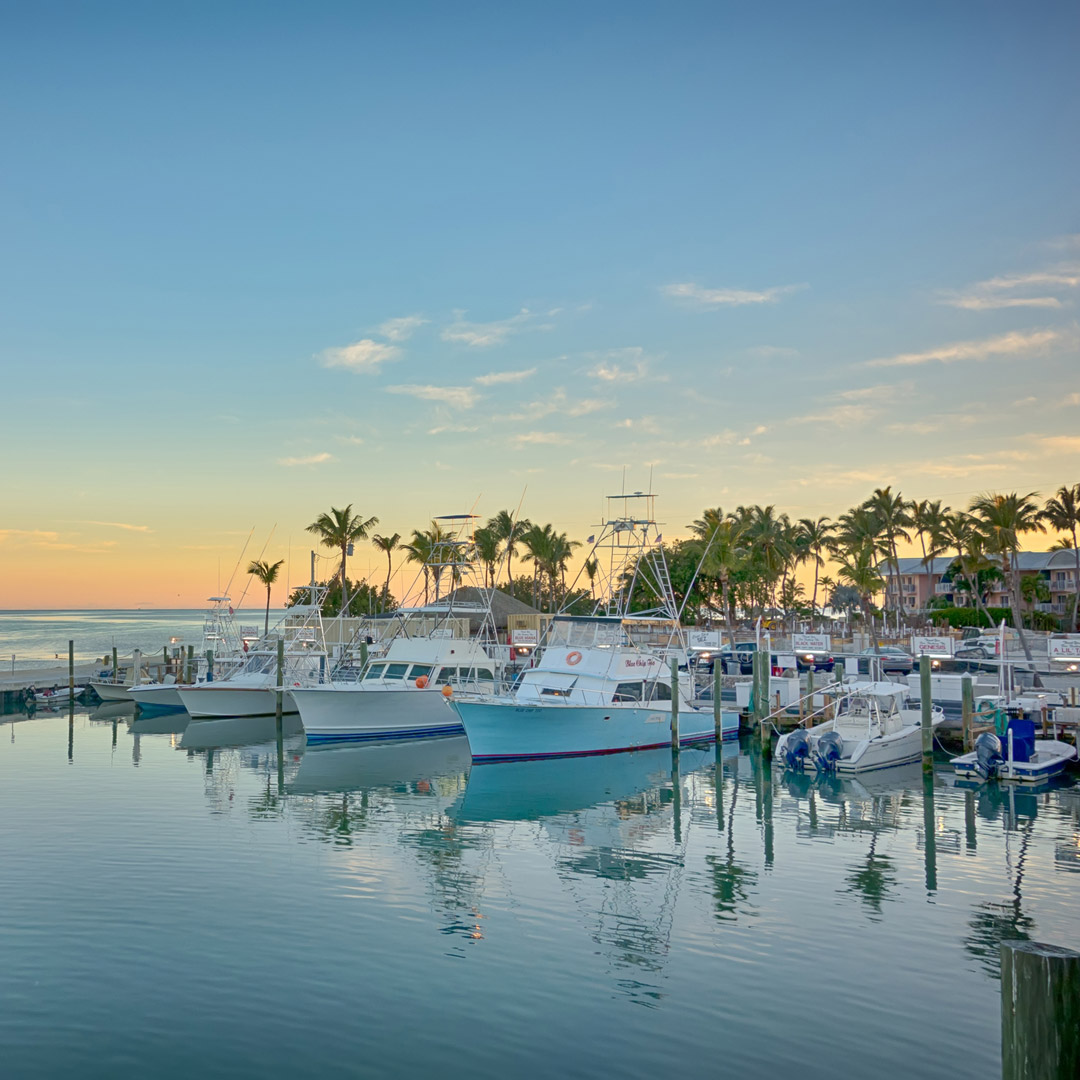
Day 3
Venture south on U.S. 1 to the Florida Keys. In northern Key Largo, head to the tranquil Dagny Johnson Key Largo Hammock Botanical State Park, which lures hikers, bikers, and wildlife lovers daily. Farther south you’ll encounter John Pennekamp Coral Reef State Park, where popular activities include kayaking, snorkeling, and scuba diving.
Afterward head to Dolphins Plus, where you can learn how to be a marine mammal trainer. Wildlife lovers will also appreciate the Florida Keys Wild Bird Center, home to rehabilitating brown pelicans, turkey vultures, and great horned owls.
Following a day of outdoor diversions, relax at one of Key Largo’s many waterfront restaurants, most of which offer ideal spots to watch the sunset. Throughout Key Largo you’ll find a variety of eateries, bars, and hotels, including those at the Key Largo Resorts Marina, which also features the historical African Queen.
Newsletter Signup
By clicking ‘Sign Up,’ I acknowledge that I have read and agree to Hachette Book Group’s Privacy Policy and Terms of Use
Day 4
Continue southwest to the islands of Islamorada. Here art lovers can explore paintings, sculptures, and other unique creations at The Rain Barrel on Plantation Key, while history buffs can learn about the ill-fated Overseas Railroad at Windley Key Fossil Reef Geological State Park. Farther southwest it’s hard to miss the enormous sign for Theater of the Sea, which offers bottomless boat rides and entertaining marine mammal shows. Meanwhile on Upper Matecumbe Key, you’ll find the History of Diving Museum, which houses a curious collection of diving paraphernalia.
On Lower Matecumbe Key, Robbie’s of Islamorada features boat rentals, fishing charters, and an open-air market. The marina also provides boat tours of two remote islands: Indian Key Historic State Park, once the site of a lucrative cargo-salvaging business, and Lignumvitae Key Botanical State Park, where you can tour a virgin tropical forest. While all the islands of Islamorada are worth visiting, Upper Matecumbe Key boasts most of the area’s shops, spas, bars, restaurants, and accommodations.
Day 5
Just past Layton in the Middle Keys is Long Key State Park, a tranquil place for canoeists, anglers, hikers, and snorkelers. Farther south, you can embrace other family-friendly diversions, such as flying high above the islands and coral reefs via Island Hoppers Aerial Adventures, visiting dolphins at the Dolphin Research Center, exploring the wooded islands of Curry Hammock State Park, and relaxing on Sombrero Beach, popular with swimmers, picnickers, and volleyball enthusiasts.
If you have time, take a walking tour of The Turtle Hospital, a rescue facility on Vaca Key. Then stop by the Pigeon Key Gift Shop, housed in a red train car, and purchase admission to Pigeon Key, an early-20th-century base camp for bridge workers. Admission includes a ferry ride to the island, which you can also access via the Old Seven Mile Bridge.
You’ll find plenty of after-hours dining and lodging options in the Middle Keys. Though most lie on Vaca Key, Marathon’s lengthiest island, you may prefer more isolated places, such as Hawks Cay Resort on Duck Key.
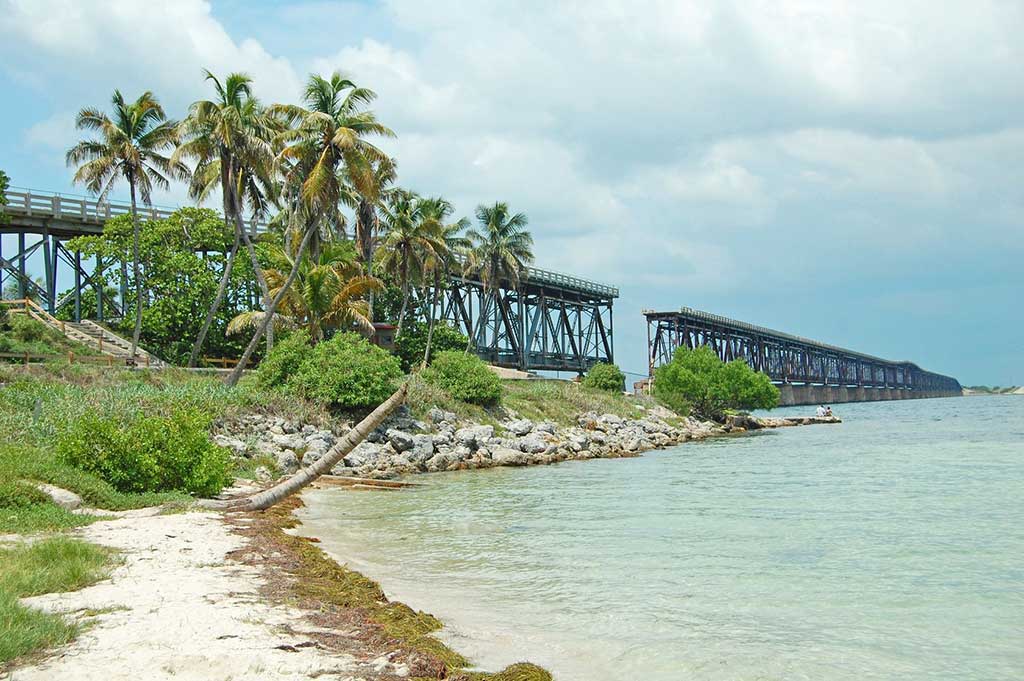
Day 6
After crossing the Seven Mile Bridge, you’ll encounter the less populated Lower Keys, where Bahia Honda State Park lures kayakers, snorkelers, anglers, and bikers daily. On Big Pine Key, you might be able to spot a tiny key deer in the National Key Deer Refuge or an alligator at the freshwater Blue Hole. While here, take a snorkeling or diving trip to Looe Key Reef, where you’ll spy large coral formations, spiny lobster, and the remains of a shipwreck.
Where you choose to spend your evening depends on your budget. If you can’t afford the high dining and lodging prices at the exclusive Little Palm Island Resort & Spa, consider some of the Lower Keys’ more affordable options, from cottages on Big Pine Key to an RV park on Geiger Key.
Day 7
Head to Key West and survey its attractions aboard the Conch Tour Train. Then begin your self-guided tour on Duval Street in Old Town, where you can peruse art galleries, visit historical landmarks, and see colorful butterflies at The Key West Butterfly & Nature Conservatory. On nearby Whitehead Street, stroll among six-toed felines at the Ernest Hemingway Home and Museum, view the city from atop the Key West Lighthouse, and see John James Audubon’s drawings at the Audubon House & Tropical Gardens.
Not far away, the impressive Mel Fisher Maritime Museum presents many of the treasures discovered in the famous Atocha shipwreck. Stroll to the nearby Custom House Museum, where you’ll see portraits of famous Key West residents, and take a guided tour of the Harry S. Truman Little White House. If there’s time, head to Fort Zachary Taylor Historic State Park, which offers guided tours of the 19th-century fort as well as the finest beach in town.
Be sure to experience the daily Sunset Celebration at Mallory Square, and enjoy the plethora of nearby shops, bars, and restaurants. While you’ll find a variety of accommodations here, from low-key campgrounds to oceanfront resorts, consider staying in Old Town, which ensures easy access to Key West’s most popular activities.
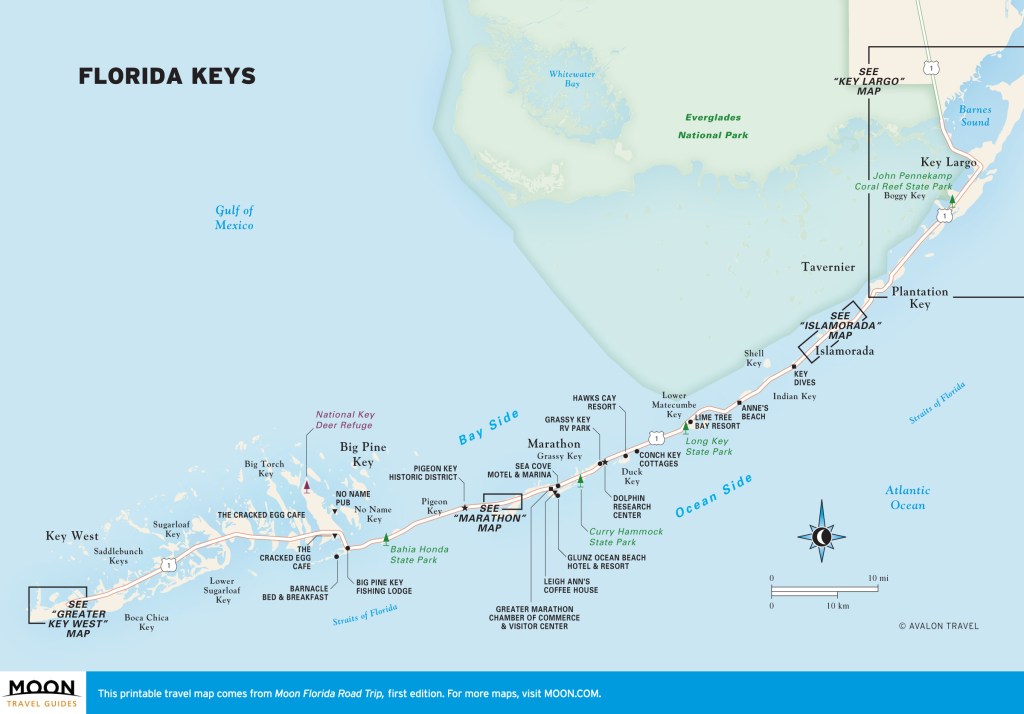
Newsletter Signup
By clicking ‘Sign Up,’ I acknowledge that I have read and agree to Hachette Book Group’s Privacy Policy and Terms of Use
Pin For Later
